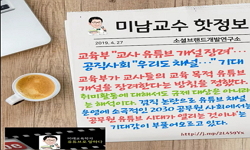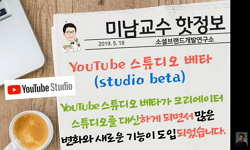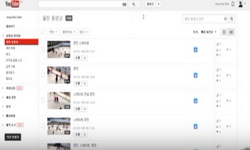This article examines the current status of the popularization of Korean ancient history by categorizing it into bookstores, internet platforms, and lecture halls, which are places for the distribution of historical knowledge, and examines the future ...
http://chineseinput.net/에서 pinyin(병음)방식으로 중국어를 변환할 수 있습니다.
변환된 중국어를 복사하여 사용하시면 됩니다.
- 中文 을 입력하시려면 zhongwen을 입력하시고 space를누르시면됩니다.
- 北京 을 입력하시려면 beijing을 입력하시고 space를 누르시면 됩니다.

시민을 위한 한국고대사 -대중화의 현황과 과제- = Korean Ancient History for Citizens: current status and challenges of popularization
한글로보기부가정보
다국어 초록 (Multilingual Abstract)
The publication of books in the print media is important in that it has a circulation structure with the media, leading to YouTube and public lectures. The top-selling books on ancient history in the past two decades have been characterized by translations of some sources with specific intentions, planned syntax, publication due to the influence of TV programs, and pseudo-historical books related to Gojoseon and Goguryeo.
In the video medium of TV, history programs such as <History Special>, <History Journal That Day>, and <Naked Korean History>, which were initially dominated by ancient history content, have recently shifted to Joseon history and modern history. This may be due to the depletion of ancient history content, but it also confirms that the public’s interest is not limited to ‘glorious’ ancient history.
On YouTube, another medium, the channels that dealt with ancient history were almost exclusively in the so-called “pseudo-history” category. Most of the channels dealt with Korean history in general, and only the KBS History Journal That Day channel, which operates history-related content, had a large number of content dedicated to ancient history.
Public lectures are the best way to have a close relationship with the public face-toface. Public museums, libraries, and cultural centers in each region often organize ‘museum universities’ or ‘lectures’ by inviting experts from history to the humanities, and they are composed of various disciplines to meet the interests and needs of citizens.
The challenge for the Korean archaeological community is still to make contact with the public. Here, it is important to reiterate the importance of book publication as the starting point of a virtuous cycle that leads to media and lectures. Another aspect is that various curricula are needed to train professional historical researchers at universities, and as an extension of public history, the training and education of public historians such as professional commentators and cultural tourism (heritage) interpreters outside of schools should also be of interest to the archaeological community.
This article examines the current status of the popularization of Korean ancient history by categorizing it into bookstores, internet platforms, and lecture halls, which are places for the distribution of historical knowledge, and examines the future direction of the popularity and publicity of ancient history.
The publication of books in the print media is important in that it has a circulation structure with the media, leading to YouTube and public lectures. The top-selling books on ancient history in the past two decades have been characterized by translations of some sources with specific intentions, planned syntax, publication due to the influence of TV programs, and pseudo-historical books related to Gojoseon and Goguryeo.
In the video medium of TV, history programs such as <History Special>, <History Journal That Day>, and <Naked Korean History>, which were initially dominated by ancient history content, have recently shifted to Joseon history and modern history. This may be due to the depletion of ancient history content, but it also confirms that the public’s interest is not limited to ‘glorious’ ancient history.
On YouTube, another medium, the channels that dealt with ancient history were almost exclusively in the so-called “pseudo-history” category. Most of the channels dealt with Korean history in general, and only the KBS History Journal That Day channel, which operates history-related content, had a large number of content dedicated to ancient history.
Public lectures are the best way to have a close relationship with the public face-toface. Public museums, libraries, and cultural centers in each region often organize ‘museum universities’ or ‘lectures’ by inviting experts from history to the humanities, and they are composed of various disciplines to meet the interests and needs of citizens.
The challenge for the Korean archaeological community is still to make contact with the public. Here, it is important to reiterate the importance of book publication as the starting point of a virtuous cycle that leads to media and lectures. Another aspect is that various curricula are needed to train professional historical researchers at universities, and as an extension of public history, the training and education of public historians such as professional commentators and cultural tourism (heritage) interpreters outside of schools should also be of interest to the archaeological community.
국문 초록 (Abstract)
인쇄매체인 책의 출간은 유튜브나 대중강연의 교재로 이어지는 등 미디어와 순환구조를 갖는다는 점에서 중요한 위치를 점한다. 지난 20여 년간 상위권으로 판매된 고대사 관련 책들의 특징은 특정 의도를 가지고 번역되는 몇몇 자료의 번역서, 기획된 통사, TV프로그램의 영향에 의한 출간, 고조선이나 고구려 등과 관련된 유사역사학 저서들이었다. 이 중 『한국생활사박물관』시리즈나 시민을 위한 역사로 기획된 통사류, 출판사의 기획으로 이루어진‘명강’ 시리즈 등은 대중들의 호응을 얻은 책들이라고 할 수 있다. 여전히 이른바 ‘유사역사학’ 관련 저서가 강세를 보이고 있지만, 역사학계 또한 대중들의 관심과 지적 호기심을 채워줄 수 있는 작업을 진행하고 있음을 확인할 수 있다. 영상매체인 TV에서 <역사스페셜>과<역사저널 그날>, <벌거벗은 한국사> 등의 역사 전문 프로그램의 경우 초기에는 고대사 콘텐츠의 비중이 컸던 것에 비하면 최근에는 조선사나 근현대사로 변화되고 있다. 이는 고대사 콘텐츠의 소재 고갈도 있겠지만, 대중들의 관심이 ‘찬란한’ 고대사에만 머무르는 것이 아님을 확인시켜주는 것이기도 했다. 또다른 매체인 유튜브의 경우 고대사 콘텐츠만을 다루는채널은 거의 이른바 ‘유사역사학’ 계열이었다. 대부분 한국사 전반을 다루는 채널들이었고, KBS에서 역사관련 콘텐츠만을 운영하는 <KBS역사저널 그날> 채널에서만 고대사만을 다루는 콘텐츠들을 다수 확인할 수 있었다. 대중과 직접 대면으로 밀착된 관계를 가질 수 있는것은 대중강연이라 할 수 있다. 각 지역의 국공립박물관이나 도서관, 문화원의 경우 좁게는역사에서부터 넓게는 인문학으로 전문가를 초빙하여 ‘박물관대학’이나 ‘강좌’를 편성하는 경우가 많으며, 시민들의 관심과 요구에 맞게 다양한 학문으로 구성하고 있다는 점이 눈길을 끌었다.
현재 한국고대사학계에 남겨진 과제는 여전히 대중들과의 접점을 만들어나가는 것이다. 여기에서 중요한 것은 책의 출판이 미디어, 강연으로 이어지는 선순환의 출발점으로서중요한 의미를 가진다는 것을 다시 한번 되새길 필요가 있다. 또다른 측면은 대학에서 전문역사연구자의 양성에 다양한 교육과정이 필요하다는 점과, 공공역사의 확장으로서 학교 바깥에서의 전문해설가나 문화관광(유산)해설사 등의 공공역사가의 양성, 교육도 고대사학계가 관심을 가져야 하는 부분이라 생각한다.
본 글은 한국고대사의 대중화 현황을 역사 지식의 유통의 장인 서점과 인터넷 플랫폼, 강연의 장으로 분류해서 검토하고 향후 고대사의 대중성과 공공성의 방향을 살펴보는 것을목적으로 ...
본 글은 한국고대사의 대중화 현황을 역사 지식의 유통의 장인 서점과 인터넷 플랫폼, 강연의 장으로 분류해서 검토하고 향후 고대사의 대중성과 공공성의 방향을 살펴보는 것을목적으로 한다.
인쇄매체인 책의 출간은 유튜브나 대중강연의 교재로 이어지는 등 미디어와 순환구조를 갖는다는 점에서 중요한 위치를 점한다. 지난 20여 년간 상위권으로 판매된 고대사 관련 책들의 특징은 특정 의도를 가지고 번역되는 몇몇 자료의 번역서, 기획된 통사, TV프로그램의 영향에 의한 출간, 고조선이나 고구려 등과 관련된 유사역사학 저서들이었다. 이 중 『한국생활사박물관』시리즈나 시민을 위한 역사로 기획된 통사류, 출판사의 기획으로 이루어진‘명강’ 시리즈 등은 대중들의 호응을 얻은 책들이라고 할 수 있다. 여전히 이른바 ‘유사역사학’ 관련 저서가 강세를 보이고 있지만, 역사학계 또한 대중들의 관심과 지적 호기심을 채워줄 수 있는 작업을 진행하고 있음을 확인할 수 있다. 영상매체인 TV에서 <역사스페셜>과<역사저널 그날>, <벌거벗은 한국사> 등의 역사 전문 프로그램의 경우 초기에는 고대사 콘텐츠의 비중이 컸던 것에 비하면 최근에는 조선사나 근현대사로 변화되고 있다. 이는 고대사 콘텐츠의 소재 고갈도 있겠지만, 대중들의 관심이 ‘찬란한’ 고대사에만 머무르는 것이 아님을 확인시켜주는 것이기도 했다. 또다른 매체인 유튜브의 경우 고대사 콘텐츠만을 다루는채널은 거의 이른바 ‘유사역사학’ 계열이었다. 대부분 한국사 전반을 다루는 채널들이었고, KBS에서 역사관련 콘텐츠만을 운영하는 <KBS역사저널 그날> 채널에서만 고대사만을 다루는 콘텐츠들을 다수 확인할 수 있었다. 대중과 직접 대면으로 밀착된 관계를 가질 수 있는것은 대중강연이라 할 수 있다. 각 지역의 국공립박물관이나 도서관, 문화원의 경우 좁게는역사에서부터 넓게는 인문학으로 전문가를 초빙하여 ‘박물관대학’이나 ‘강좌’를 편성하는 경우가 많으며, 시민들의 관심과 요구에 맞게 다양한 학문으로 구성하고 있다는 점이 눈길을 끌었다.
현재 한국고대사학계에 남겨진 과제는 여전히 대중들과의 접점을 만들어나가는 것이다. 여기에서 중요한 것은 책의 출판이 미디어, 강연으로 이어지는 선순환의 출발점으로서중요한 의미를 가진다는 것을 다시 한번 되새길 필요가 있다. 또다른 측면은 대학에서 전문역사연구자의 양성에 다양한 교육과정이 필요하다는 점과, 공공역사의 확장으로서 학교 바깥에서의 전문해설가나 문화관광(유산)해설사 등의 공공역사가의 양성, 교육도 고대사학계가 관심을 가져야 하는 부분이라 생각한다.
동일학술지(권/호) 다른 논문
-
한국 고대사 연구의 미래를 위한 제언 -21세기 2/4분기를 맞이하며-
- 한국고대사학회
- 권오영
- 2024
- KCI등재
-
한국 고대사와 지역주의적 역사이해 -지역학과 지역사, 지역주의 역사문화권사업의 부각-
- 한국고대사학회
- 조법종
- 2024
- KCI등재
-
- 한국고대사학회
- 김재홍
- 2024
- KCI등재
-
20세기 한국고대사의 반성 -‘위대한 고대사’를 중심으로-
- 한국고대사학회
- 조인성
- 2024
- KCI등재




 DBpia
DBpia






